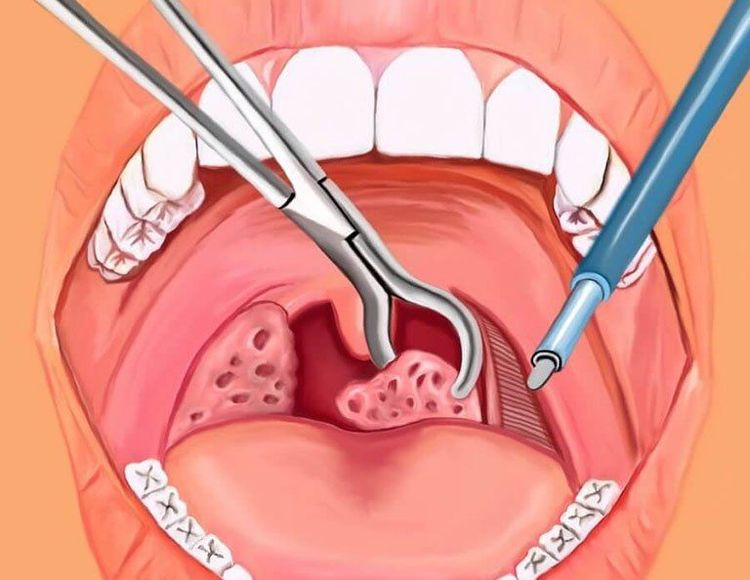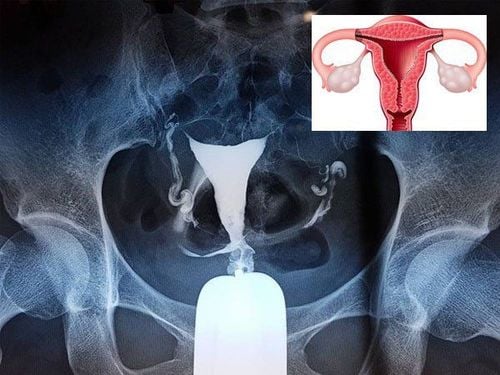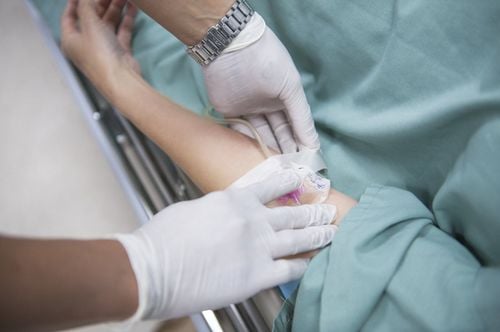This is an automatically translated article.
The article was professionally consulted with Specialist Doctor II Nguyen Van Thai - Ear, Nose Throat Doctor - Department of Medical Examination & Internal Medicine - Vinmec Danang International General Hospital.Tonsillitis is a common disease in ear-nose-throat diseases in many subjects, from children to adults. This disease often recurs, easy complications, long time will affect health, so many people often choose to cut when the tonsils are inflamed many times? With modern technology, today there are many methods to remove tonsils, including endoscopic tonsillectomy. So is endoscopic tonsillitis surgery dangerous?
1. What is tonsillitis?
The tonsils are lymphatic tissues located at the junction of the pharynx, at the back of the throat, surrounding the pharynx, forming a closed ring called the peripharyngeal lymphatic ring. The tonsils help fight bacteria and viruses that enter the body through the nose and mouth. Most cases of tonsillitis are caused by a viral infection.2. Signs of tonsillitis and when to remove tonsils?
If your tonsillitis is mild, it can be treated at home to relieve symptoms. If tonsillitis is recurrent, sore throat, persistent shortness of breath, more severe, then tonsillectomy can be selected. Signs that you are having tonsillitis:● Dry throat, bad breath: Bad breath, dry throat, itchy throat, feeling that there is a foreign body in the throat due to bacteria accumulating in the tonsil pit and purulent fluid. accumulation in the pit of the tonsils causing obstruction.
● Enlarged tonsils: Difficulty swallowing saliva or food, unclear voice, poor breathing, or snoring while sleeping.
The tonsils and the roof of the tongue are bleeding, in the oral cavity there are white or yellow pus dots. The patient has lymph nodes in the neck, especially the lymph nodes in the posterior wall of the mandible, which are red and swollen and painful.

Hình ảnh viêm amidan
If your tonsillitis is mild, it can be treated at home to relieve symptoms. If tonsillitis is recurrent, sore throat, persistent shortness of breath, more severe, then tonsillectomy can be selected.
Currently, there are many popular methods of tonsillectomy such as: Laser tonsillectomy, tonsillectomy for children by Sluder method, tonsillectomy with coblator, by plasma and by dissection and noose method. However, laparoscopic tonsillitis is the newest method of medicine today. This method has many great advantages, is safe for the patient, heals quickly, and reduces pain.

Hiện nay có nhiều phương pháp cắt amidan
3. Is endoscopic tonsillitis dangerous?
Tonsillectomy is common surgery. In recent years, medicine has had a number of new tonsillectomy tools that are easy to operate, less painful for the patient and less bleeding.In addition to the classic cutting methods commonly used before such as cutting with Sluder, Anse, but there are many other methods such as cutting with electric knife, ultrasonic, laser and by Coblator. The aim is to cause less pain and limit bleeding, the incision heals quickly, shortens the surgery time, and minimizes complications.
Currently in Vietnam, the main method used is cutting with Anse and electric knife. Coblation means controlled cutting which is a surgical process that uses a radio frequency device that generates a plasma field to cut tissue. Endoscopic tonsillitis is essentially in the process of medical equipment to perform tonsillectomy, on the top of the device there is a small camera attached so that the doctor can monitor directly the process of performing the surgery. This is the newest method.
4. Cut tonsils to abstain from what?
To achieve the best treatment results, after performing tonsillectomy, the patient should abstain carefully. Here are some tips:● Limit talking and small talk as much as possible
● Abstain from gargling and blowing your nose for 2 weeks after surgery
● Avoid traveling by plane, or traveling a lot. potholes, rough

Người bệnh nên tránh đi lại bằng máy bay
● Do not stay in the sun
● Drink warm water, do not eat cold foods
● Take a bath with warm water
● Take medicine, follow the doctor's prescription and instructions, and re Timely examination
● Diet: After surgery for 1-3 hours, the patient should drink cold milk. During the first week after surgery, the patient should eat soft foods such as porridge or liquid food. From day 8 to day 12, the patient can eat sticky rice. After 12 days, you can eat and drink normally.
BSCK II Nguyen Van Thai was formerly a Doctor of Otolaryngology and Head and Neck Surgery at the Department of Otolaryngology - Hue Central Hospital with more than 17 years of treatment experience, especially in the field of Head and Neck Surgery. Currently, he is an Otolaryngologist at the Inter-Specialist Clinic of the Department of Medical Examination and Internal Medicine, Vinmec Da Nang International General Hospital.
Customers can directly go to Vinmec Health system nationwide to visit or contact the hotline here for support.
MORE:
Is tonsillitis contagious? Identify fever due to tonsillitis Children have fever due to tonsillitis














